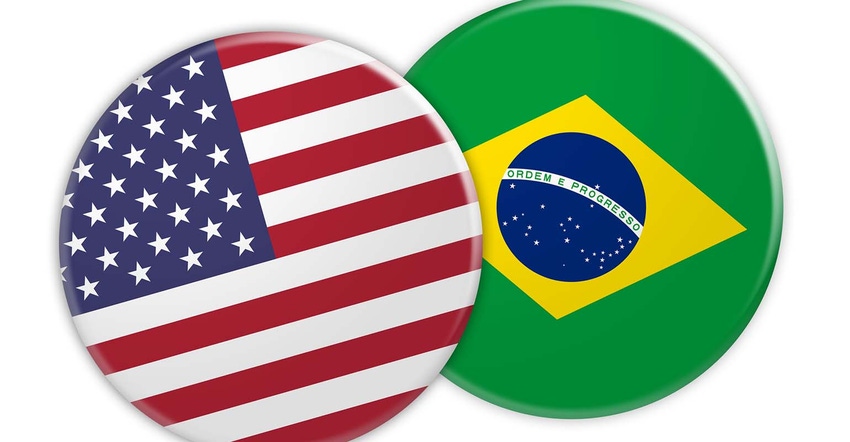
The delayed start to the rainy season in the Center West region of Brazil has many wondering if it will be enough to send grain prices higher.
Brazil as a whole has planted less than 3% of its expected soybean acreage. Mato Grosso has planted roughly 5% of its crop, but some of that may have to be replanted as most was seeded in hot, dry conditions while hoping for big rains that have not yet materialized. Further planting at this point without rain, could end up being counterproductive.
It has been extremely hot in these regions, so soil temperatures are not conducive to planting in the dust for extended periods of time.
There are signs Brazil will get moisture this week, but they are not necessarily the large soaking rain that is needed. Half an inch at this point is not going to cut it. I always looked for two to three inches before we put seed to soil.
Historically behind
Mato Grosso has historically planted over 20% of its soybeans by Oct. 10. This will put them at least 15% behind schedule.
Bear in mind this does not necessarily impact soybean yields, but rather pushes the season back a few weeks. It is more likely that it will impact the second crop of corn which follows as there will be less time to get it planted.
There is still time to catch up to the five-year average. However, we have pointed out already how there will be limited soybeans for China to export from Brazil in January. China is usually ready and waiting when the first beans hit the market in January. It is increasingly unlikely that there will be soybeans ready to ship by then.
This could help U.S. exports more than expected in early 2021.
While Mato Grosso and the Center West region of Brazil get most of the attention, roughly half of Brazil’s soybean crop is planted someplace else. The northeast and southeast regions of Brazil typically plant later. They typically look to plant in late October and so the dry weather has not affected Brazil as a whole yet.
An estimated 50% of Brazil’s 2020/2021 crop has been forward sold already. While prices remain elevated, farmers will remain reluctant to sell much more than that until they make more planting progress and they get a better idea of what the season is going to be like.
Not all areas are waiting on rain. Scattered showers have seen sufficient rainfall to get nearly 70% of the first corn crop planted in the southern states of Parana and Santa Catarina. Therefore, the first season corn crop is mostly on schedule and there is no disruption planned for the 10-plus million acres expected to be planted. They are eager to get their corn planted in these areas before quickly switching over to beans.
This first crop of corn should fill Brazil’s needs for the first six months of 2021 until the second crop begins its harvest in late June. This only makes up roughly one-third of Brazil’s corn crop so the total crop size won’t be known until next summer as it will mostly depend upon the second crop.
Dry weather in Brazil’s Center West region will continue to bring support to the soybean market, but be on the lookout for heavy rains and accelerated planting later in the month. Things can turn around fairly quickly.
Matthew Kruse is President of Commstock Investments. He can be reached at [email protected] or call 712-227-1110.
Futures trading involves risk. The risk of loss in trading futures and/or options is substantial and each investor and/or trader must consider whether this is a suitable investment. Past performance is not indicative of future results. Trading advice is based on information taken from trades and statistical services and other sources that CommStock Investments believes to be reliable. We do not guarantee that such information is accurate or complete and it should not be relied upon as such. Trading advice reflects our good faith judgment at a specific time and is subject to change without notice. There is no guarantee that the advice we give will result in profitable trades.
The opinions of the author are not necessarily those of Farm Futures or Farm Progress.
About the Author(s)
You May Also Like






